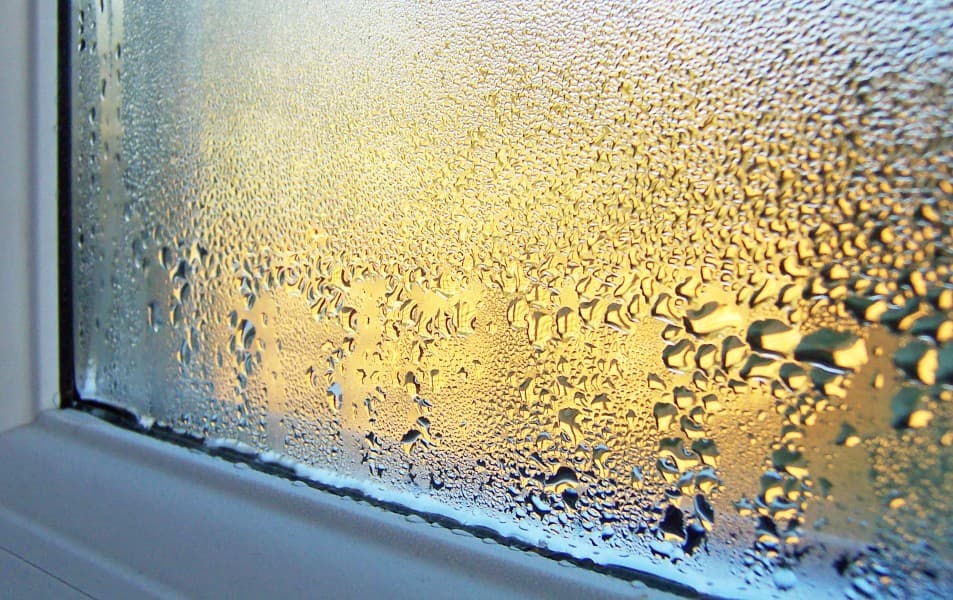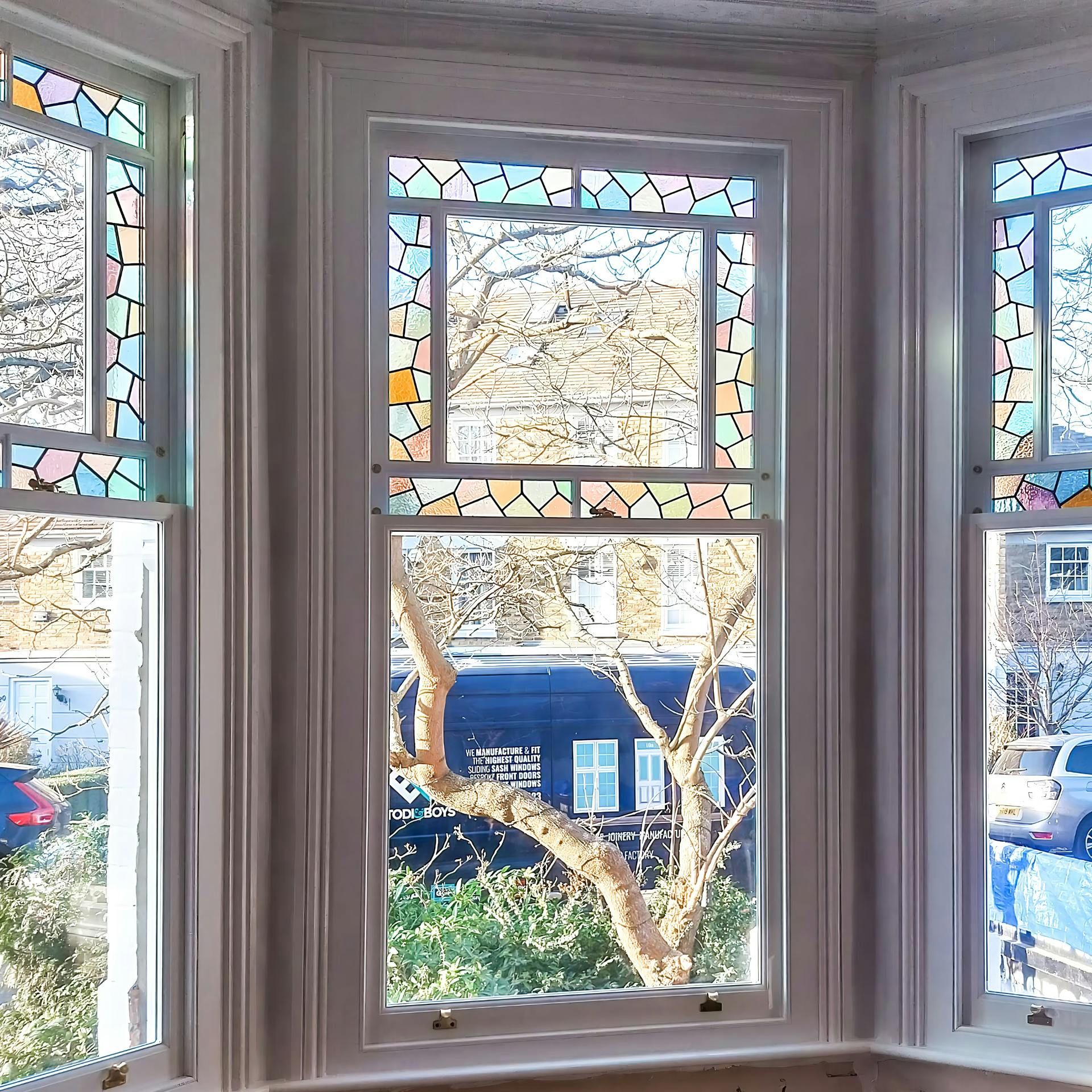How To Stop Condensation On Double Glazed Windows In Winter
21 October 2024
Many homeowners experience the common issue of seeing condensation or dripping window panes during wintertime. The most frequent problem UK families face is when we start heating our homes during cold weather. Despite having modern double-glazed windows, condensation will still develop, thus creating uncomfortable conditions which could result in significant damage.
The Energy Saving Trust states that typical British homes create 10 to 15 liters of water vapor daily from cooking, showering, ordinary breathing procedures and clothes drying. All this moisture can easily settle on cold glass surfaces, especially if the room is poorly ventilated.
This complete guide provides detailed instructions on how to stop condensation on double-glazed windows in winter. It uses basic step-by-step methods to maintain dry comfort and prevent mold growth in homes. Read on to learn more.

What Causes Condensation on Windows in Winter?
Water vapours in the air transform to a liquid state as they reach cold window surfaces through condensation. Throughout winter, windows stay cooler than indoor temperatures because external weather conditions remain colder than indoor heat. The meeting of indoor air moisture with colder window glass results in droplet formation.
The main causes include:
- High humidity indoors: From daily activities
- Poor ventilation: Not letting moist air escape
- Cold windows and surfaces: They attract condensation
An airtight home structure increases the probability of winter condensation formation. Double glazing and home insulation techniques create worse condensation problems when homeowners do not effectively control the moisture levels in their homes. Knowing what causes condensation on windows in winter forms the basis for developing successful methods to control it.
Why Double Glazed Windows Still Get Condensation
Many people mistakenly believe that double-glazed windows eliminate condensation, yet they only partly prevent it from occurring. Windows are designed to capture home heat and maintain higher energy efficiency levels inside buildings. The tight seal that protects heat inside also blocks vapor from leaving the space.
House rooms accumulate humidity from water-heating activities such as kettle usage, hot showers, and drying items inside the house. The lack of sufficient airflow between your windows will create condensation on their surfaces. Even the best-quality window will experience condensation if your indoor air remains too moist.
Understanding how to stop condensation on double-glazed windows in winter requires methods beyond glass replacement because it depends on home moisture control.
How to Stop Condensation on Windows Overnight in Winter
Condensation builds up overnight when rooms are closed and people are sleeping. Here’s how to reduce it:
- Open trickle vents: Let small amounts of air circulate.
- Leave doors slightly open: This helps distribute air throughout the home.
- Use an extractor fan in bathrooms before bed.
- Run a dehumidifier overnight in problem rooms.
- Keep curtains open slightly to reduce surface cooling.
These steps are simple but effective in reducing morning moisture. If you’ve been asking how to stop condensation on windows overnight in winter, try these tonight — you might be surprised by the difference.
Should You Open Windows in Winter?

It might seem odd to open windows when it’s freezing, but yes — short bursts of ventilation help massively. Opening windows just 5 to 10 minutes a day can remove excess humidity.
Here’s why it works:
- It quickly replaces moist indoor air with drier outdoor air
- You avoid long-term heat loss by only opening them briefly
- It reduces the chance of condensation forming.
Should you open windows in winter? Absolutely. It’s one of the simplest and cheapest solutions to fighting condensation. Use it alongside heating for best results.
How Long Should You Open Windows in Winter?
Leaving windows open for limited durations serves ventilation better than having them open for extended periods. The productive time for opening windows for air exchange is between 5 and 15 minutes daily, with the most beneficial effect seen after cooking, showering, or sleeping cycles.
Cross-ventilation (opening windows on opposite sides of the house) helps fresh air move quickly and clear out humidity. It’s more effective than leaving one window open for hours.
So, next time you’re wondering how long you should open windows in winter, keep it short and strategic—it works better and saves heat.
How to Prevent and Reduce Condensation Long-Term
Getting rid of condensation overnight is great, but long-term prevention is better. Here are the key strategies:
Reduce Moisture at the Source:
The most effective method to prevent condensation formation is to stop moisture buildup at its source. Regular household activities such as boiling potables, showering, or using indoor dryers generate quick moisture increases inside a house. Always put lids on your pans during cooking and turn on the extractor fan if present.
When possible, dry laundry outside and with vented tumble dryers because indoor drying methods increase water vapor content in indoor spaces. The casual practice of placing a kettle cover reduces the moisture content inside your house. The combination of small changes effectively blocks condensation from taking control of windows.
Use a Dehumidifier:
A dehumidifier could be the right solution for your damp home environment. These devices extract humidity from the air and store the collected water in a small tank. Some newer dehumidifiers include smart sensors that activate operation only when high humidity conditions exist, allowing you to minimise your electricity bill.
Home dehumidifiers come in various sizes to match the size of your bedrooms or larger areas such as lounges and hallways. The tool runs silently enough to operate throughout the night. Regular use of a dehumidifier will produce two key effects: it will reduce wet windows and lead to greater indoor comfort.
Add Passive Moisture Traps:
For a low-cost and low-effort solution, try moisture traps. The small containers contain absorbent crystals or beads that act as water absorbers without requiring a power source. The devices function best in areas prone to water condensation, such as the backside, under furniture, cupboards, beneath sink areas, and on windowsills.
They cannot perform heavy tasks like dehumidifiers, but they complement other methods well. Because of their placement inside these areas, the devices can efficiently collect water from restricted, closed spaces.
How to Insulate and Seal Windows for Winter
Cold window surfaces attract condensation. Insulating and sealing them can help:
How to Insulate Windows for Winter?
- Thermal curtains: Block out the cold and keep heat in
- Window insulation film: Easy to apply and very effective
- Insulated blinds: Stylish and functional
Learning how to insulate windows for winter is crucial if your home loses heat through glass.
How to Seal Windows for Winter?
- Foam weather stripping: Seals small gaps
- Silicone caulk: For cracks in the window frame
- Rubber seals: Great for sash or wooden windows
Learning how to seal windows for winter can reduce draughts and prevent warm air from escaping. Keeping surfaces slightly warmer can also help prevent condensation.
How to Stop Condensation in Specific Rooms
Different rooms create different moisture problems. Here’s how to deal with the worst culprits;
Bedrooms:
The condensation problem in bedrooms becomes challenging because human breathing produces moisture during sleep. A lack of ventilation makes moisture settle on cold window panes, causing window fogging and possible water spots on glass surfaces. The issue can be prevented by allowing regular airflow into the space.
Tips:
- Allow a 10-minute window opening during morning hours to release accumulated night moisture.
- The room temperature should stay moderately warm at night because excessive heat causes windows to become noticeably colder, resulting in condensation formation. The room temperature should rest at approximately 18 °C.
- A compact dehumidifier acts as a solution to minimise air moisture because it prevents window condensation.
- Bed positioning affects condensation formation. Placing beds against exterior walls traps moisture against cold walls. Repositioning your bed away from walls would help improve airflow.
Kitchens:
The kitchen is the toughest interior space to control condensation in a building. Steam builds up constantly in kitchens during cooking procedures that involve boiling water and frying, as well as soup preparations. A lack of ventilation leads to window condensation formation.
Tips:
- You should activate the extractor fan, which generates steam during cooking preparations. The extractor fan absorbs moisture, which prevents window condensation. All the steam escapes as the kitchen takes a breath to the outside.
- You will achieve wonderful results by simply putting a lid over your pan. A cover placed over the pan allows steam to stay in while preventing it from escaping the cooking area. Placing the lid on the pan will enable you to trap the steam within while it remains in your kitchen.
- A slight opening of the window allows cold air to vent moisture from the room. A tiny window opening provides the cooking area with refreshing inner air circulation.
Bathrooms:
Moisture problems seem to peak in bathroom spaces. Your bathroom becomes densely steamed during and after hot baths or showers. When moist air lacks proper ventilation, windows become foggy. Mold and dampness eventually develop from neglected moisture accumulation in the space.
Tips:
- Select the extractor fan before you exit your shower or bath, and keep it on for at least twenty minutes. Continuous fan operation throughout this time prevents steam from lingering in the bathroom area.
- Blocking the bathroom door with steam from your shower will prevent moisture from entering other areas. This practice benefits the bathroom by preventing steam from moving across rooms while maintaining its dry condition.
- Opening the bathroom window for some time after shower helps remove dampness from the air. Windows enable damp air to escape and let dry, fresh wind in.
When to Call a Professional?
If condensation has led to:
- Black mould around the frame
- Rotting wooden windowsills
- Damaged seals in double glazing
It’s time to call in the pros. Companies like Todi & Boys Joinery offer professional repair, restoration, or replacement for timber sash windows and casement windows. If moisture is getting between panes, it may be a sign your sealed unit has failed and needs replacing.
Why Choose Todi & Boys Joinery for Your Window Needs
Todi & Boys Joinery helps eliminate our customers’ frustrating issue of window condensation. As a company specialising in timber sash and casement windows, we provide professional solutions for various window types, such as Bay Sash Windows Service, Georgian Sash Windows Service, Victorian Sash Windows Service, and Edwardian Sash Windows Service.
The company operates as a condensation solutions provider that has specialised in serving older properties and conservation area buildings for 30 years. Expert home window professionals from our team offer customised, dry, and comfortable solutions for new glazing, existing window repairs, and complete window replacement services.
The company promises high-quality service and complete client satisfaction. Contact us today to receive professional solutions and expert advice about your condensation issues and window needs. Procrastination never allows problems to improve on their own.
Need Expert Help?
Condensation might seem small, but it causes serious problems over time. It’s worth fixing, from mould and damp smells to damaged windows and paintwork.
You know how to stop condensation on double glazed windows in winter. You can take quick steps to reduce it overnight, long-term actions to manage humidity, and solutions to insulate and seal your windows. Ventilating for just 10 minutes a day can make a world of difference.
Whether to prevent condensation on windows in winter or how to deal with it in winter, you now have all the answers.
So, take action today, and keep your home warm, dry, and healthier all winter. Don’t let condensation ruin your windows! Contact Todi & Boys Joinery today for expert help. Whether you need repairs, replacement, or advice, we’re here to keep your home dry and comfortable.







